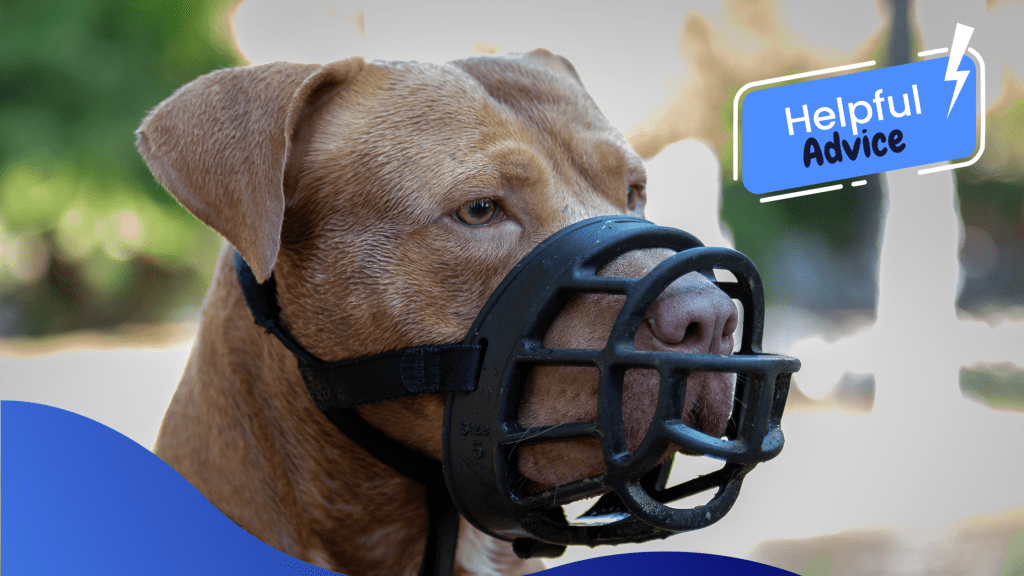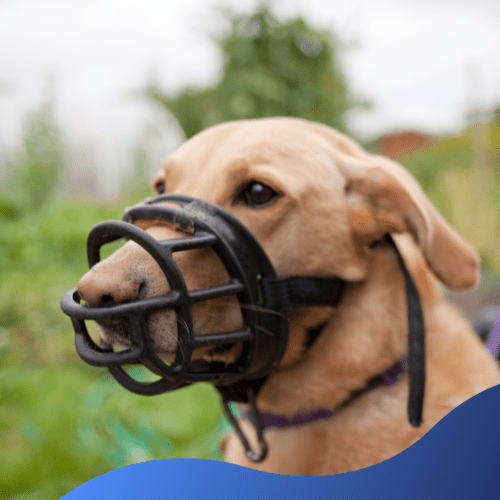
Is your dog required to wear a muzzle? This can be due to reactivity to other dogs, scavenging behaviour on walks, or UK restrictions. Are you unsure of where to start with muzzle training?
Training is very important when introducing your dog to wearing a muzzle. Even the most laid-back dog can become stressed if they are muzzled without the correct introduction. In this article, we are going to discuss the correct muzzle training techniques and show you a planned step-by-step guide.
Let’s begin…
We recommended selecting your dog’s favourite treats, cutting them up into small cubes, and keeping them on hand ready to use. Make sure you start your muzzle training session in a quiet place with no distractions. This will help keep your dogs focused on you and the training. It is good to start the training inside the home to eliminate environmental distractions. We recommend that you schedule five minutes, twice daily, to spend training. If possible, set up a camera to film your sessions so you can watch it back to track your progress.

Muzzle training should take place over a series of short sessions, ideally over at least a few days, taking care to make sure your dog associates the muzzle with fun and positive situations.

Step One – Muzzle Hide & Seek
Bring it in to view and immediately throw some tasty treats to your dog. As they finish the treats, remove the muzzle from view again. Repeat for a few minutes per session. Continue with this until they look happy or excited to see the muzzle.
Step Two- Let’s Develop A Skill Called Targeting
To encourage your dog to put their nose into the muzzle basket, hold the muzzle still and tap it. Praise and reward their approach, if they know a touch cue. Gradually delay the treat delivery until the dog reaches the end of the basket. This is known as shaping behavior, rewarding progressive approximations of the final goal. The dog must put their nose in before showing or offering the treat.


Step Three- No Need To Rush
To train your dog to wait with their nose in position for rewards, gradually build duration by keeping their nose in the muzzle for at least 5 seconds. Pause for 1 second before giving the treat and follow it with another. The goal is to build the dog’s ability to wait with their nose in position for rewards. Take it slowly and don’t panic if your dog struggles. Work slowly towards getting your dog to the muzzle, putting their nose in, waiting a second, giving one treat, waiting 5 seconds, and giving a second treat. Provide treats through the bars to encourage keeping their nose in place, and provide breaks by asking for familiar cues to prevent frustration.
Step Four- Time To Buckle Up
Do not rush, this is a crucial stage in the process of clipping a muzzle. It involves holding the muzzle, treating it, and releasing the straps. Slowly move the strap up the head, behind the ear, across to the other side, and eventually to the clip. If necessary, give extra treats. After clipping the muzzle, practice clipping it up, treating it, and removing it again for at least three sessions. Gradually pausing before taking it off again, and may need to give treats every few seconds to start.


Step Five- Let’s Change The Narrative
When your dog is calm with the muzzle on for 30 seconds, you need to start to slow down the treat delivery. This is often easiest if they are distracted by doing something else at the same time. For example, ask them for a paw when they have their muzzle on and reward them for it. Practice short-distance recall, calling them back and forth between people and making a big fuss of them. Try to make it exciting, positive, and engaging. Next, time to start practicing on the lead in the garden. Reward very frequently and practice for only a few minutes at a time. Once you have achieved this stage, it’s time to go try going for an official walk.
Step Six- Let’s Go For A Walk
Start practicing your muzzle training for short periods on walks. Allow your dog to sniff and explore to get used to the muzzle. Provide regular rewards through the bars of the muzzle and keep sessions short. Slowly prolong the interval between treats and make gaps of varying length. Aim for a variable reward schedule as this encourages the most resistant behaviour. For example, reward after 5 seconds then 7, then 2, then 5, then 10. Keep practicing until you can reward every few minutes, then every 5 and so on.

Check out our Muzzle Training E-Book:
Let’s Socialise With Warren House Vets
We offer free Nurse consults for our more nervous patients and are more than happy to help with any questions you may have about muzzle training your dog.
Thank you for reading, we hope you have found this helpful, until next time…
P.S For information about choosing the correct muzzle, please see our blog post: “Selecting the Right Muzzle: Guidelines on Size for Specific Breeds and More”.
